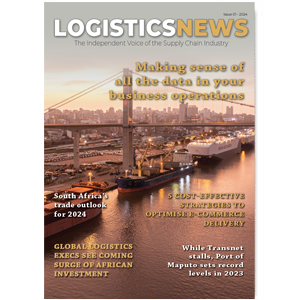A look at the concept of integrating sustainable environmental processes into the traditional
supply chain.
It is well-known that diamonds are formed under conditions of intense pressure. Likewise, the ‘formation’ of green supply chain management (GSCM) has emerged due to increased pressure on organisations to improve their environmental performance and sustainability. To better understand the GSCM ‘diamond’, it is essential to consider the origin and composition.
Numerous attempts have been made throughout history to improve environmental performance within organisations without any significant success. However, a critical breakthrough occurred in 1987 when the Brundtland Report, a publication by the World Commission on Environment and Development (WCED), introduced the concept of sustainable development and described how it could be achieved.
According to the Brundtland Report, sustainable development can be encapsulated as: “Development that meets the needs of the present without compromising the ability of future generations to meet their own needs.” The report and its findings elucidated the importance of organisations to incorporate sustainability initiatives and policies within their business and operations. By understanding the foundation of GSCM, which is sustainable development, firms are able to understand that GSCM is not based on merely one component. The three essential elements of sustainability are environmental, social and economic sustainability.
Environmental sustainability refers to an organisation’s impact and performance on an environmental level. In a supply chain context, it would refer to a reduction in waste generation, pollution, energy usage and recycling, to name a few. Apart from ensuring the environment’s wellbeing, some of the additional benefits of improving environmental performance include a better public image of the organisation and adhering to governmental policies.
Social sustainability refers to human health, justice, education and resource security, among other essential social elements in society. It could refer to initiatives such as using local rather than foreign suppliers and responsible sourcing techniques.
Economic sustainability refers to an organisation’s job creation capability, conservation of resources and organisational practices to safeguard the organisation from potential risks. The benefits here are obvious: better organisational performance will translate into improved employee benefits and investment into environmental initiatives.
Interestingly, many organisations have been primarily focusing on the environmental aspect, and have been neglecting the social and economic elements of GSCM. As a result, many organisations have been accused of ‘corporate greenwashing’, in which they delude consumers into believing that their products are environmentally friendly.
In the last year and a half, the global pandemic of COVID-19 and resulting global isolation has forced consumers to reflect on many challenging elements in our society and on our planet. One clear implication is that consumers, investors and auditing bodies are less inclined to accept disingenuous messaging around sustainability. Consequently, GSCM remains a widely misunderstood diamond in the rough. For organisations that truly want to adopt a GSCM approach, we recommend what we self-coined as a ‘3C approach’ to GSCM. Firstly, organisations need to conduct a thorough investigation into their entire supply chain operations as many organisations claim to be dedicated to sustainable practices, but aren’t.
How sustainable can an organisation be if it fails to investigate its suppliers’ practices, it overworks its employees and places profits above ethics?
Secondly, organisations should create a more circular supply chain by moving away from the traditional ‘take-make-waste’ linear model to a ‘reuse, regenerate, refurbish and resale’ methodology that positively impacts environmental, social and economic sustainability. Lastly, organisations should commit to GSCM initiatives. The initial investment and process changes may cause many organisations to ignore opportunities to reuse materials. However, contrary to popular belief, GSCM is more economical in the long run for organisations.
Supply chains are the links that unite the global industry. Organisations looking to stay profitable during and after the current pandemic should focus on meeting the demands of their consumers. Therefore, as Shirley Bassey famously sang, “Diamonds are Forever”, organisations should invest and refine their GSCM ‘diamond’.




